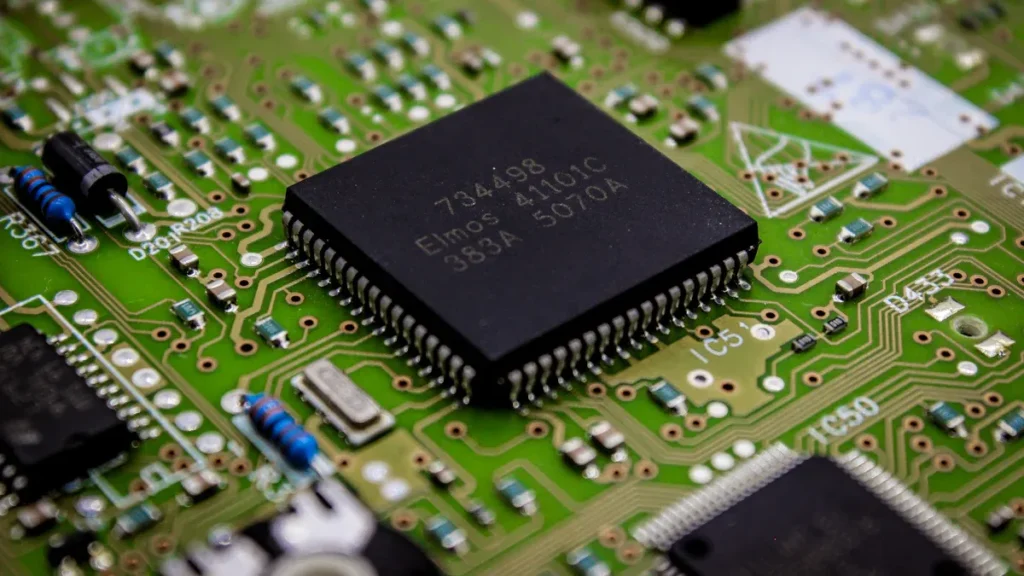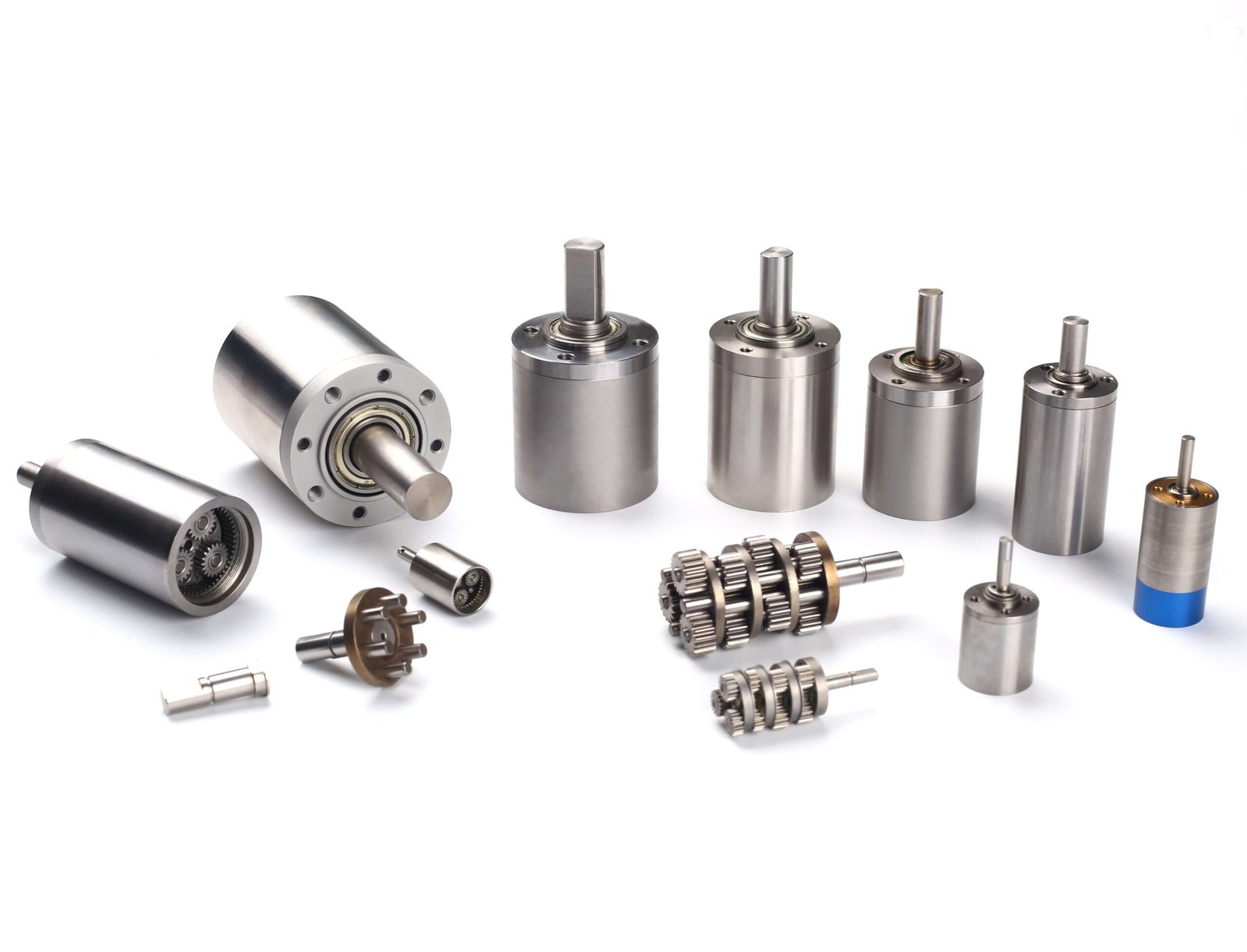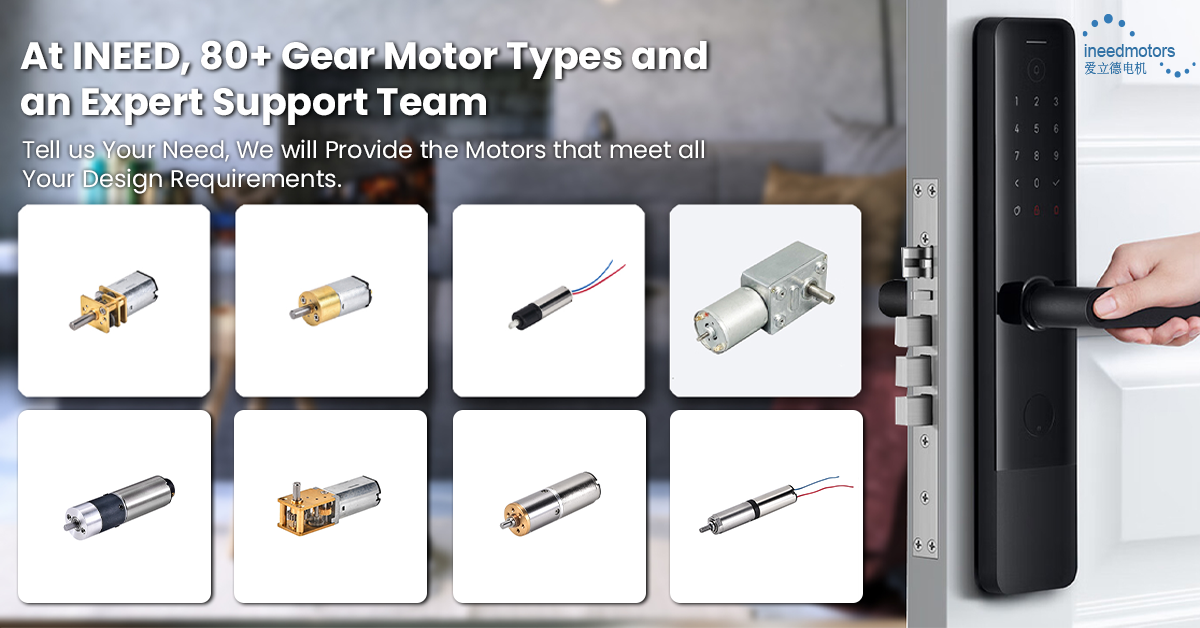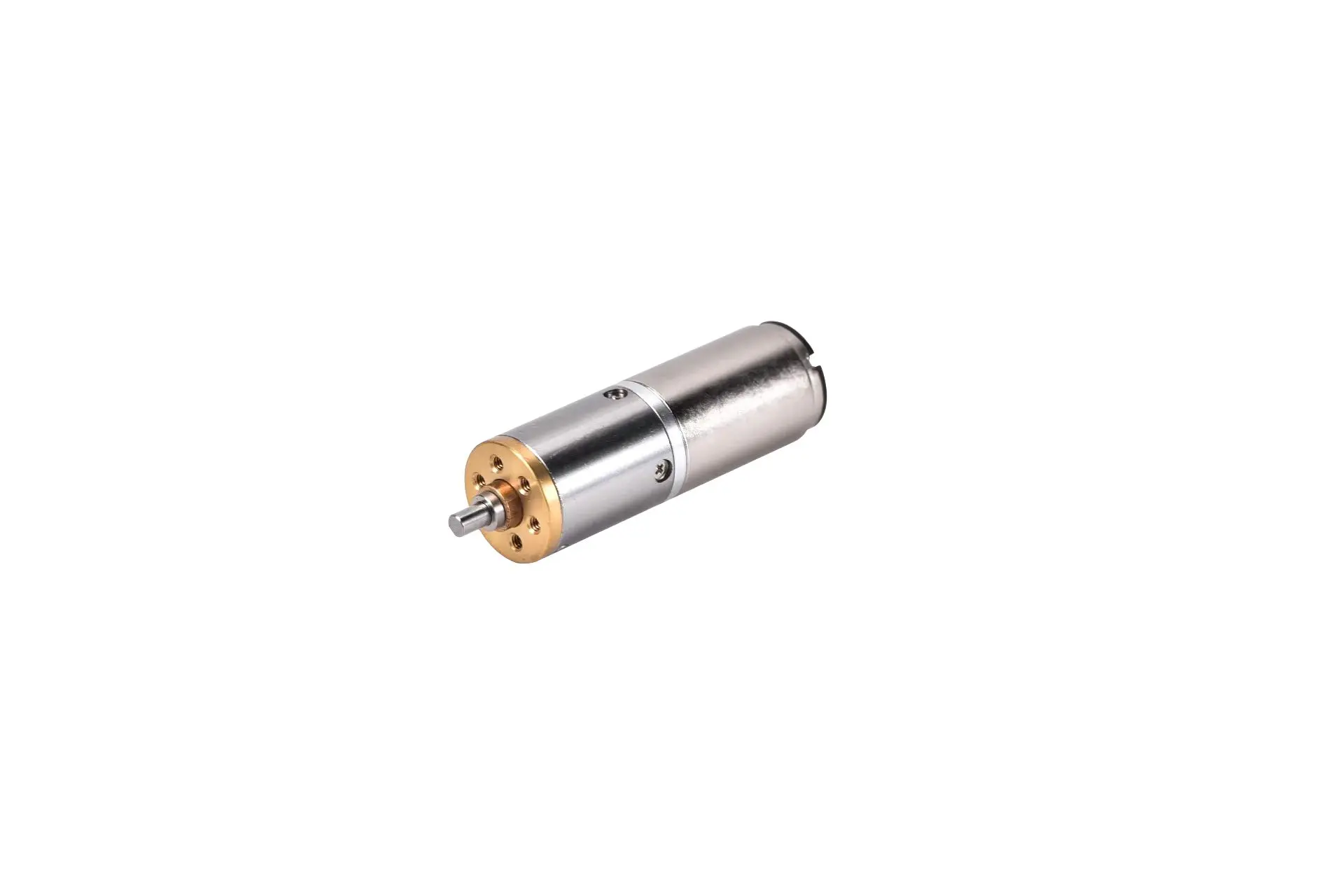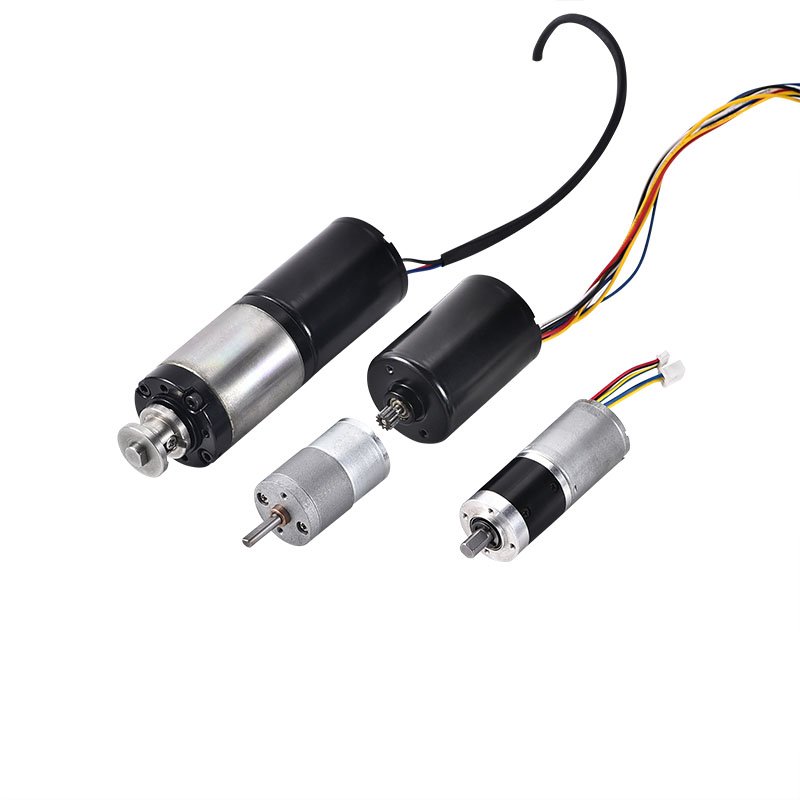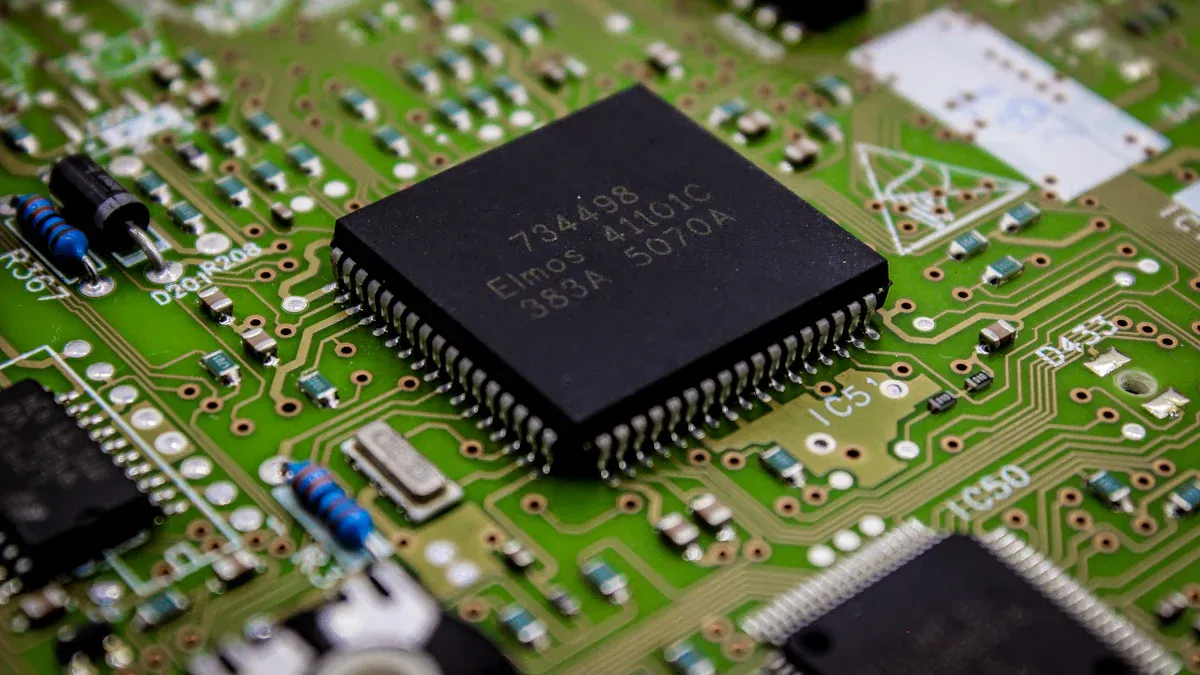
You rely on brushless motor control to achieve precise, efficient motion in modern devices. Brushless motor control uses electronic systems to manage speed and torque, making it essential for robotics, healthcare, and smart home applications. BLDC motor controllers play a vital role by delivering steady performance and adapting to specific needs. The market for these controllers continues to expand, especially in sensor-based segments and applications like hard disk drives. INEED stands out as a trusted provider of brushless gear motors and brushless DC motors, offering dependable solutions for your projects.
Key Takeaways
Brushless motor control enhances efficiency and precision in devices, making it ideal for robotics and smart applications.
Using pulse width modulation (PWM) with trapezoidal commutation offers a simple way to control speed and torque in entry-level projects.
Advanced techniques like sinusoidal control and field-oriented control (FOC) provide smoother operation and higher efficiency for demanding applications.
Choosing the right BLDC motor controller is crucial; match voltage, current, and control needs to ensure optimal performance.
Regular maintenance and proper design considerations can prevent common issues like overheating and abnormal noise in brushless motors.
Brushless Motor Control Fundamentals
What Is Brushless Motor Control
You use brushless motor control to manage the speed and torque of bldc motors with precision. This process relies on electronic systems instead of mechanical brushes. You benefit from longer motor life and less maintenance because there are no brushes or commutators to wear out. The control system uses electromagnetic induction and electronic commutation. The controller adjusts the current direction in real time, creating a rotating magnetic field that drives the rotor. You can apply pulse width modulation to change the speed by varying the signal’s duty cycle. Field-oriented control lets you fine-tune the magnetic field for even greater accuracy.
BLDC Motor Architecture
You find that bldc motors have a simple yet effective design. The stator contains coil windings arranged in three phases, usually connected in a star configuration. The rotor uses permanent magnets to convert electrical energy into mechanical rotation. Electronic commutation aligns the magnetic fields for maximum torque. The architecture eliminates mechanical friction, which boosts efficiency and reduces electrical losses. You get more energy for torque production and better performance under load.
Component | Contribution to Performance |
|---|---|
Stator | Generates torque through windings and phases |
Rotor | Converts electrical energy into mechanical rotation |
Electronic Commutation | Aligns magnetic fields for optimal torque and smooth motion |
You also notice that different winding configurations, lamination techniques, and slot-pole arrangements help reduce energy loss and improve smooth operation.
Key Benefits of Brushless DC Motors
You gain several advantages when you choose bldc motors for your projects. These motors run cooler and quieter, which increases efficiency and lifespan. You get more torque and precise control, especially in demanding applications. Brushless dc motors often reach 85-90% efficiency, while brushed motors operate around 75%. This difference saves energy and lowers operational costs. You experience minimal maintenance needs, as bearings are the only parts that wear out. BLDC motors can last over 20,000 hours and perform well in harsh environments. You also enjoy better speed control, with accuracy within 1-2%.
Tip: For entry-level applications, using brushless dc motors can help you achieve significant energy savings and reduce downtime.
BLDC motors provide:
Higher torque density
Superior speed capability
Precise speed control
Minimal maintenance
Longer lifespan
Basic Brushless Motor Control Methods
PWM and Trapezoidal Control
You start with basic control methods when working with brushless motors. The most common technique is pwm, which stands for pulse width modulation. You use pwm to adjust the speed and torque of your bldc motor. By sending a series of on-off pulses, you control how much power reaches the motor. The duty cycle, or the percentage of time the signal stays on, determines the motor’s speed. A higher duty cycle means more voltage and faster rotation. A lower duty cycle slows the motor down.
You often combine pwm with trapezoidal commutation for simple bldc control. Trapezoidal commutation energizes two of the three motor phases at a time. This method creates a trapezoidal-shaped current waveform. You get straightforward control and easy implementation. However, you may notice some torque ripple and noise during operation.
Tip: Use pwm with trapezoidal commutation for entry-level projects. This combination gives you reliable speed control and easy setup.
Here is a table that shows how pwm control works and its limitations:
Aspect | Description |
|---|---|
PWM Control Mechanism | You generate on-off pulses to regulate power. Duty cycle affects speed. |
Current Ripple | High current ripple can cause extra heating and losses. |
Electromagnetic Interference | High-frequency switching may create EMI. Shielding helps reduce interference. |
Switching Losses | Power transistors may lose some energy during switching. Efficient components help minimize losses. |
Complexity in Control | Advanced pwm techniques may require complex algorithms and increase system cost. |
You should know the differences between trapezoidal and sinusoidal commutation. Trapezoidal commutation uses a simple algorithm and produces some torque ripple. Sinusoidal commutation, which you will learn about in advanced control methods, eliminates torque ripple and noise but requires more complex control.
Feature | Trapezoidal Commutation | Sinusoidal Commutation |
|---|---|---|
Shape of Current | Trapezoidal | Sinusoidal |
Torque Ripple | Exists at every commutation | Eliminated |
Control Algorithm | Simple | Complex and mathematically intensive |
Active Phases | Only two phases active at a time | Three phases can be active simultaneously |
Switching Losses | Less switching losses | Higher switching losses |
Torque Production | Less torque produced | Maximum torque produced |
Noise | Acoustic and electric noise | Less noise |
BLDC Motor Controller Essentials
You need a bldc motor controller to manage your brushless motor. The controller acts as the brain of your system. It uses a microcontroller to run control algorithms and process sensor inputs. Gate drivers connect the microcontroller to power transistors, which switch current through the motor windings. Hall sensors or encoders give rotor position feedback, helping the controller know when to switch phases. Current sensors monitor the flow of electricity in each phase. The power supply provides the voltage and current needed for both the controller and the motor.
You often use a 3 phase bldc motor controller for basic control methods. This controller energizes two of the three phases at a time, following a six-step commutation sequence. You get efficient and reliable operation for most entry-level applications.
Here is a table showing the essential features of a bldc motor controller:
Essential Feature | Description |
|---|---|
Microcontroller | Executes control algorithms and processes sensor inputs. |
Gate Drivers | Interface between microcontroller and power transistors. |
Power Transistors | Switch current through motor windings. |
Hall Sensors or Encoders | Provide rotor position feedback. |
Current Sensors | Monitor current in motor phases. |
Power Supply | Supplies voltage and current for controller and motor. |
Six-Step Commutation | Simple method energizing two phases at a time. |
Note: You can use a 3 phase bldc motor controller for most basic brushless motor applications. This setup gives you reliable performance and easy integration.
INEED Brushless Gear Motors in Entry-Level Applications
You find many entry-level applications that use INEED brushless gear motors. These motors offer high efficiency, quiet operation, and long lifespan. You can use them in smart pool cleaners, where high-torque motors help remove debris and climb stairs. Intelligent electric curtains rely on brushless DC motors for smooth and silent movement. Drones benefit from the lightweight and efficient design of these motors. E-bikes use brushless gear motors to improve energy efficiency and extend battery life. Precision tools require accurate and customizable motors, which INEED provides.
Smart pool cleaners use brushless gear motors for effective cleaning.
Intelligent electric curtains depend on brushless DC motors for quiet operation.
Drones need lightweight and efficient brushless motors.
E-bikes use brushless gear motors for better energy efficiency.
Precision tools require high accuracy and customization.
You can choose INEED brushless gear motors for your entry-level projects. These motors give you reliable performance, easy integration, and customization options. You get support from INEED for selecting the right motor and controller for your needs.
Tip: For entry-level applications, select a bldc motor controller that matches your motor specifications. INEED offers free samples and technical support to help you get started.
You now understand how to use basic control methods with brushless motors. You can apply pwm and trapezoidal commutation for simple and effective control. You know what features to look for in a bldc motor controller. You see how INEED brushless gear motors fit into real-world entry-level applications.
Advanced BLDC Motor Control Techniques
Sinusoidal and Field-Oriented Control (FOC)
You can achieve smoother and quieter operation in bldc motors by using sinusoidal control. This method uses sinusoidal currents to drive the motor phases. You notice a significant reduction in torque ripple, which leads to improved efficiency and lower noise. Sinusoidal control works well in applications that require high precision and quiet performance, such as medical devices and robotics.
Field-oriented control takes motor control technology to the next level. You use foc to decouple torque and flux, which allows you to control each independently. This technique uses d-q axis transformation to optimize performance. You get fast acceleration and deceleration, which means you can respond quickly to changes in load. Motor controllers using foc can reach efficiency levels as high as 97%, especially at higher speeds.
Here is a table that shows the main advantages of field-oriented control for precision motor applications:
Advantage | Description |
|---|---|
Torque and Flux Control | Decouples torque and flux using d-q axis transformation. |
Energy Efficiency | Ensures efficient energy utilization across different operating points. |
Operational Speed Range | Expands the operational speed range beyond rated speed. |
High-Speed Efficiency | Maintains efficiency in high-speed applications. |
Dynamic Response | Enables fast and accurate response to load changes. |
Reduced Energy Losses | Improves overall energy efficiency and reduces operational costs. |
Application Flexibility | Suitable for various industries and motor types. |
Improved Torque Control | Provides smooth transitions and reduced torque ripple. |
High Power Density | Achieves high efficiency and power density. |
Field Weakening | Allows for wide speed range operation. |
Tip: Use foc when you need precise speed and torque control in demanding applications. This method gives you high efficiency and reliable performance.
You can also use advanced techniques like Space Vector PWM and electronic commutation to further improve efficiency and control.
Sensorless vs. Sensor-Based Control
You have two main options for detecting rotor position in bldc motors: sensor-based and sensorless control. Sensor-based control uses Hall sensors or encoders to provide direct feedback. You get excellent startup performance and immediate torque. This method gives you smooth and precise low-speed control, which is important for applications that require frequent stops and starts.
Sensorless control estimates rotor position using back-EMF. You benefit from lower cost and higher durability because there are no physical sensors to maintain. Sensorless control works best in high-speed applications and environments where reliability is critical. You need advanced algorithms in your controller to achieve accurate performance.
Here is a table comparing sensor-based and sensorless bldc motor control methods:
Feature | Sensored BLDC Motor | Sensorless BLDC Motor |
|---|---|---|
Rotor Position Detection | Hall sensors or encoders | Back-EMF estimation |
Startup Performance | Excellent, immediate torque | Weak, delayed torque |
Low-Speed Control | Smooth and precise | Less stable |
High-Speed Efficiency | Good | Excellent |
Cost | Higher | Lower |
Durability | Moderate | High |
Maintenance | Requires care for sensors | Minimal |
Environmental Suitability | Sensitive to interference | Robust and sealed |
Complexity of Control | Simpler electronics | Advanced algorithms required |
Ideal Application | Precision control, frequent stops | Continuous motion, cost-sensitive AGVs |
You should choose sensor-based control for applications that need precise positioning and frequent stops. Sensorless control fits best in continuous motion systems and cost-sensitive environments.
Applications of Brushless DC Motors in Industry
You see advanced bldc motor controllers used in many industries. Electric vehicles rely on bldc motor controller technology for both powertrain and auxiliary systems. Aerospace applications use bldc motors for actuators and flight control systems. Industrial automation benefits from robotic arms, conveyors, and CNC machines powered by bldc motors. Consumer electronics, such as cooling fans, hard drives, and drones, also use bldc motor controller solutions for high efficiency and reliability.
Sensorless bldc motor control is common in several sectors:
Renewable energy generation
Electric vehicles
Industrial automation
HVAC systems
You gain several advantages by using advanced bldc motor control methods in manufacturing environments. These include noise-free operation, maintenance-free systems, compact size, long lifespan, and high efficiency. You save energy and reduce operational costs by choosing the right controller and motor control technology.
Here is a table showing how advanced bldc motor control methods contribute to energy savings:
Advantage | Description |
|---|---|
Noise-free | Operates quietly, reducing noise pollution in manufacturing environments. |
Maintenance-free | Requires less upkeep, lowering operational costs. |
Compact size | Saves space, allowing for efficient layouts. |
Long lifetime | Reduces replacements, supporting sustainability. |
High efficiency | Operates with minimal energy loss, increasing energy savings. |
Note: You can use advanced bldc motor controllers with techniques like SVPWM and sensorless control to maximize efficiency in your industrial applications.
INEED Solutions for Advanced Motor Control
You can rely on INEED for advanced bldc motor controller solutions. INEED offers geared bldc motors that enhance control and performance for high-precision applications. These motors provide consistent power across various speeds, making them ideal for medical devices and robotics. You benefit from a long lifespan, with motors lasting up to 10,000 hours.
INEED uses advanced controllers like PID for accurate speed and position control. You get feedback systems that improve performance in robotics and complex machinery. You can adjust torque, speed, and voltage to meet your specific application needs.
Here is a table showing how INEED ensures reliability and quality in its advanced bldc motor controllers:
Quality Checks | What It Guarantees |
|---|---|
Material Checks | Only the best materials are used. |
Lifetime Testing | Motors work well for a long time. |
Key Process Inspections | Motors meet strict performance rules. |
Final Shipment Checks | Products arrive in perfect shape. |
You get high-quality bldc motor controllers that deliver reliable performance. INEED builds controllers with a strong focus on reliability, using rigorous testing and material checks. You can customize your controller to match your application’s torque, speed, and voltage requirements.
Tip: Choose INEED advanced bldc motor controllers for high efficiency, reliability, and customization in demanding industrial applications.
You now understand how to use advanced bldc motor control techniques to achieve high efficiency, precise control, and reliable performance in your projects. You can select the right controller and motor control technology for your application, ensuring long lifespan and consistent results.
Implementation and Troubleshooting for BLDC Motors
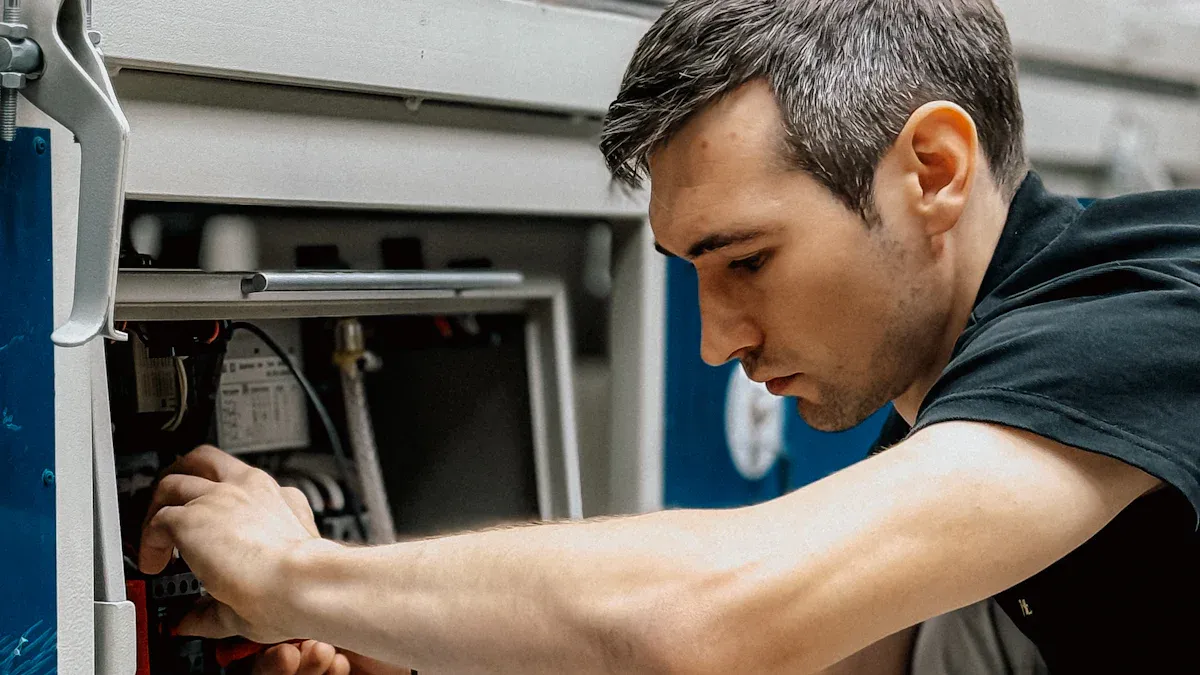
Hardware and Design Considerations
You need to select the right hardware for your bldc motor project. Start by choosing a bldc motor that matches your application, whether you need a sensored or sensorless version. Pair your motor with a controller that supports your preferred bldc motor control algorithm. Use a control unit, such as an Arduino or STM32, to send commands for speed, torque, or position. Make sure your power supply matches the voltage and current requirements of your motor and controller. Consider adding sensors like Hall-effect sensors or encoders for precise feedback. Pay attention to heat management, vibration, and noise, especially at low speeds. Always match your motor and driver specifications for reliable operation.
Component | Description |
|---|---|
BLDC Motor | Available in sensored or sensorless versions. |
Motor Controller (ESC) | Handles switching and power delivery. |
Control Unit | Sends signals to the controller to set speed, torque, or position. |
Power Supply | Must match the motor’s voltage and current requirements. |
Optional Sensors | Hall-effect sensors or encoders for rotor position feedback. |
Challenges | Motor heating, vibration, and noise at low speed; importance of matching motor and driver specs. |
Design choices impact long-term reliability. You should select a motor that fits your needs and integrate sensors correctly. Use advanced algorithms only when your application demands them. Manage heat with proper cooling and ventilation. INEED offers customization services to help you select the best way to control a bldc motor for your project.
Design Factor | Impact on Reliability |
|---|---|
Control System Complexity | Requires advanced algorithms and processing power, affecting performance and reliability. |
Motor Selection | Choosing the right motor type ensures compatibility and meets performance expectations, enhancing reliability. |
Sensor Integration | Proper sensor placement and type are crucial for accurate operation, impacting long-term reliability. |
Heat Management | Effective heat dissipation is essential for maintaining performance and longevity under various conditions. |
Common Issues and Solutions
You may encounter issues during installation or operation. Motor overheating can occur if you run the motor above its rated current or if cooling devices fail. Abnormal noise or vibration often results from bearing wear, mechanical imbalance, or PWM frequency interference. Use regular maintenance to inspect bearings and correct balance. Clean cooling devices and check for dust blockage. Adjust controller settings according to technical manuals.
Fault | Symptoms | Common Causes | Solutions |
|---|---|---|---|
Motor Overheating | Housing temperature >80°C, abnormal odor, performance degradation | Overload, poor heat dissipation, internal damage, improper controller settings | Inspect load, optimize cooling, replace worn parts, adjust controller settings. |
Abnormal Noise/Vibration | High-frequency whistling, mechanical impact noise, resonance | Bearing wear, mechanical/electromagnetic unbalance, PWM interference, installation issues | Maintain bearings, correct balance, adjust electromagnetic settings, detect PWM harmonics, inspect installation. |
Follow these troubleshooting steps to resolve common problems:
Balance the rotor and attached load.
Replace noisy or worn bearings.
Tighten all mounts and fasteners.
Re-align motor shafts and driven components.
Inspect and clean the motor interior.
Check gearboxes for proper mesh and lubrication.
Inspect for electrical shorts or excessive load.
Monitor controller temperature and ensure proper cooling.
Visually inspect PCB components for damage.
Update firmware using manufacturer tools.
Test sensor output with a multimeter or logic analyzer.
Verify wiring connections and shield against magnetic interference.
Tip: INEED provides technical support and risk management services to help you troubleshoot and maintain your bldc motor systems.
Selecting the Right Brushless Motor Control Method
You must choose the best way to control a bldc motor based on your application. Start by determining your motor’s electrical requirements, including rated voltage, current, and power rating. Consider your control needs, such as the desired bldc motor control algorithm and communication interface. Evaluate the controller’s performance characteristics, including maximum current and voltage ratings, operating frequency, efficiency, protection features, and thermal management.
Voltage: Match the input voltage to your system.
Current: Ensure the controller can handle the motor’s maximum current draw.
Power: Calculate input and output power for optimal selection.
Control Mode: Choose between sensorless or sensored control based on your application.
Protection: Look for controllers with built-in protection features.
When you select a controller, make sure it is compatible with your motor and meets all technical requirements. INEED offers free samples and expert advice to help you find the best way to control a bldc motor for your needs.
Note: Always consult with INEED’s engineering team for customization and support when implementing advanced algorithms or integrating new controllers.
You can choose between basic and advanced bldc motor control methods based on your needs. Basic bldc control offers simple design and low maintenance. Advanced bldc control gives you higher power density and better torque. See the table below for a quick comparison:
Feature | Basic Brushless Motor Control | Advanced Brushless Motor Control |
|---|---|---|
Cost | Higher due to advanced electronics | Varies based on materials and design choices |
Performance | More efficient, longer lifespan | Higher power density, better torque and speed characteristics |
Maintenance Requirements | Low maintenance | Low maintenance, but may require more power under overload |
Technology | Simple design | Complex design with electronic switches |
BLDC motors are popular for reliability and controllability. You can improve efficiency by choosing the right bldc motor controller circuitry.
When you select a bldc motor controller, match it to your application’s voltage, current, and control needs. INEED stands out with strong quality control, technical support, and a global presence.
Evidence Type | Description |
|---|---|
Commitment to Quality | INEED has a robust quality control system and adheres to professional certification standards. |
Technical Capabilities | The company maintains partnerships with skilled tech teams to offer tailored solutions. |
Global Market Presence | INEED supplies products to various markets including Southeast Asia, Northern Europe, and Brazil. |
You can find more resources on wiring, installation, and troubleshooting for bldc motor control in INEED’s guides. INEED’s brushless dc motors with built-in Hall sensors help you achieve precise bldc control for any project.
FAQ
How do you choose the right BLDC motor controller for your project?
You match the controller’s voltage and current ratings to your motor. You check if you need sensorless or sensored control. You look for protection features like overcurrent and thermal shutdown. You ask INEED for free samples to test before final selection.
What is the best way to reduce noise in brushless motor applications?
You use sinusoidal or field-oriented control for smoother operation. You select motors with precision gears and proper mounting. You keep the motor clean and check for loose parts. You can request low-noise brushless gear motors from INEED.
Can you customize brushless gear motors for specific needs?
You can customize torque, speed, voltage, and gearbox type. You upload your design files to INEED for a quick quote. You work with their engineering team to match your application requirements.
Tip: You get faster results by providing clear specifications and drawings when requesting customization.
What should you do if your BLDC motor overheats?
You check the load and reduce it if possible. You inspect cooling devices and clean them. You adjust controller settings to match rated specifications. You contact INEED for technical support if the problem continues.
How do you troubleshoot abnormal vibration in brushless motors?
You inspect bearings for wear. You balance the rotor and attached load. You tighten all mounts and fasteners. You check for electromagnetic interference. You follow INEED’s troubleshooting guide for step-by-step solutions.
Troubleshooting Step | What You Check |
|---|---|
Bearings | Signs of wear or damage |
Rotor Balance | Proper alignment |
Mounts | Secure attachment |
EMI | Shielding effectiveness |
